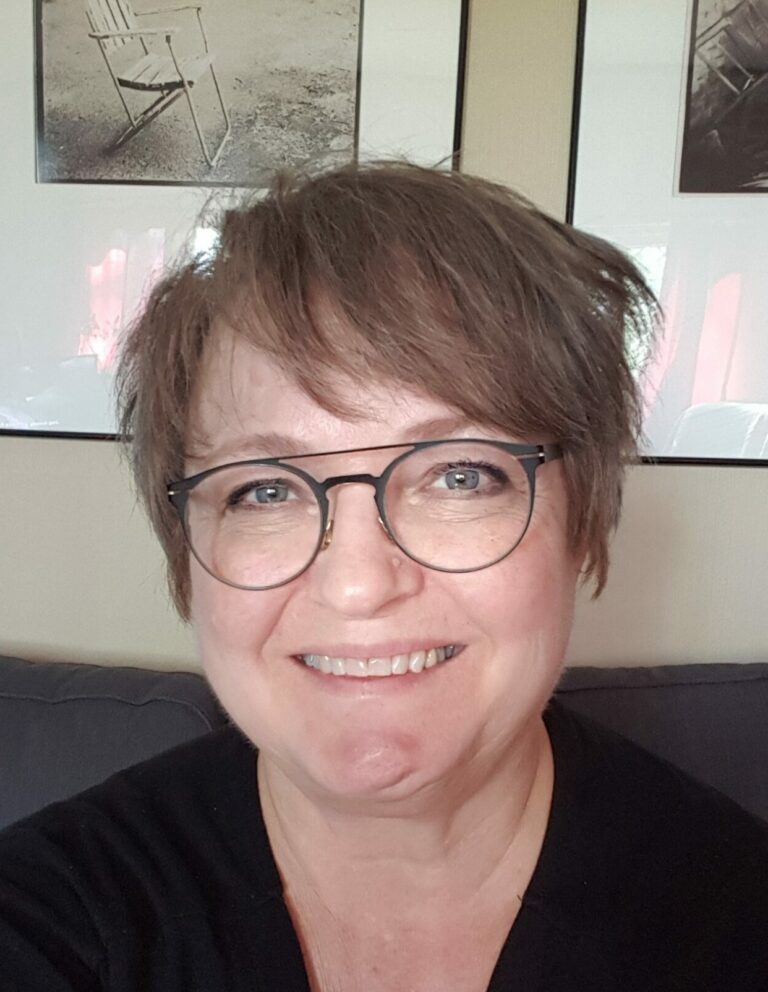Anneli Raninen Lundberg
Anneli, please tell us a little bit about your background and how your silver clay journey started.
I have loved sculpting since I was a little girl using wax based modeling clays, making new stuff over and over until the colors were all squished together to a uniform grey dough.
I soon went on to ceramics clay, and later enrolled in programs of sculpture and silversmithing at the Steneby school of Art and Crafts in Dalsland, Sweden.
The stoneware clay turned into tiny sculptures, fitted in Sterling silver to become unique pieces of jewelry.
The first time I tried silver metal clay I was hooked immediately! This was the perfect material for me!
You have a lot of mystical and mythological imagery in your work, from Viking era Nordic pieces to icons and historical type pieces. Where does this influences come from?
I blame most of it on “Världens Bästa Sagor”, or in English “The World’s Best Fairy Tales”! This amazing book, borrowed from one of my older cousins, pulled me in – into the world of mythical beings from all over the world: Costjey the Immortal, the old witch Baba-Jaga, The Light Falcon Finist and many other wonderous and mysterious creatures. The Russian stories were the best. Maybe they appealed to me because of my Finnish/Karelian heritage, or maybe it was the fantastic illustrations by Ivan Bilibin that made those stories my favorites.
And all the old folk stories and myths told by my grandmother took on the same kind of shapes and colors as Bilibins imagery in my mind.
Can you tell us about your piece called “Christmas triptych” and the process you went through to create it?
I started out with sketches on paper, and my first thought was to have Virgin Mary and Jesus flanked by angels, but decided to just keep the angel wings so as not to draw attention away from the Mother and Child. The base wall was rolled flat, the shape cut out and then allowed to dry. I transferred the drawing onto the flat greenware, and built the relief of the Mother and Child with silver paste. A few final touches to the faces and drapings of clothes were made by detailed carving with an Xacto blade and rubbing/sanding with a wooden skewer. The star of Bethlehem was added – a white cubic zirconia – and fitted with a syringe bezel and syringe rays of light.
The angel shutters were made in a similar way as the base wall, except that I used parts of a wing mold to create the texture.
Then I continued by making and attaching the hinges to the back wall and to the shutters, leaving space for the arched walls of the triptych, or altar shrine if you will. The last thing I added were the pieces for the lock, and the top arch and the “floor”, making sure that they fit with the hinges.
After a final sanding, I fired the triptych in the kiln .Aura 22 was added for the gold details. After tumbled it and put it all together, I dunked it in a Liver of Sulphur solution to get some nice, ancient-looking colors. I polished some areas that I wanted to keep silver white.
You have talked about an air of antiquity captured in your work, symbolizing an undefined past. Can you explain more about this?
It’s a strange thing – I might begin with an idea of something sleek and modern, but I’m never completely satisfied with how that looks – and only after a few alterations later it will turn into something that looks old and used and worn, like a found object from times long gone. It might be those folk stories again, or I might just have to admit that I love that feeling that there’s a story behind a piece; or the thought of people from a place long gone having worn the jewelry.
What were your initial obstacles when you started creating jewelry and how did you overcome them?
I definitely preferred sculpting to smithing, and didn’t have the equipment or – let’s face it – the patience to do casting. As I mentioned above, I turned to ceramics clay until metal clay came along and let me sculpt whatever I wanted directly in silver. The first time I brushed a fired fine silver piece I actually burst out giggling from the sheer joy of the magic of clay turning into silver!
What is the greatest ongoing challenge you face as an artist?
I would have to say that the greatest challenge is how to make ends meet as an artist. I would love to be able to survive from my art work only, but it’s not easy to get paid what all that work is really worth.
In a way, being an artist is a lot about touching people with your ideas – and it seems to me that there really is a growing audience that values the hard work, the skills, and the imagination that goes into a well-made piece of wearable art. Could there be hope for the future?
Note from Anneli: The Mother Superior Cross was custom made for The Sound of Music last summer, when I worked backstage with costume and jewelry. The musical played in Karlstad, Sweden, during the summer months and then again on a short tour in autumn.







